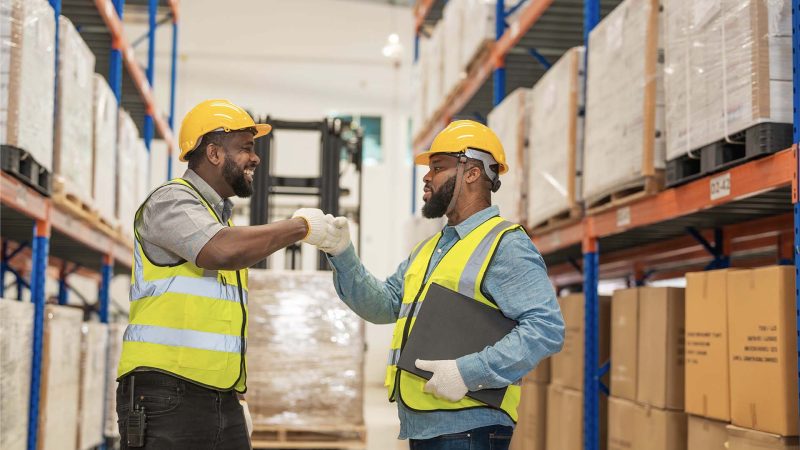The Beginner’s Guide to Sending Hazardous Materials Safely

You may be unaware of it, but every day you are in contact with hazardous materials, also known as hazmat. These substances pose a risk to human health and the environment if not handled properly. This is why there are strict regulations for shipping and transporting hazardous materials.
If you are responsible for sending hazardous materials, it is vital to understand the guidelines and procedures for doing so safely.
The High Stakes of Hazardous Material Transport
Sending hazardous materials poses significant risks, not only to your business but also to the general public and the environment. One misstep in the handling, packaging, or labelling of hazardous materials can lead to severe consequences, including:
- Fines and legal liabilities
- Health hazards for individuals involved in the transport
- Accidents during transit
- Environmental contamination
Ensuring safe transport isn’t just good practice. It’s a legal and moral imperative.
2. Understanding Hazardous Materials and Their Regulations
● What Constitutes a Hazardous Material
Hazardous materials, by definition, are substances or materials capable of posing significant risks to health, safety, and property when transported. This can include chemicals, biological agents, and even devices or equipment.
● Regulatory Frameworks Worldwide
International and domestic laws regulate the transportation of hazardous materials. In the U.S., the Department of Transportation’s Hazardous Materials Regulations (HMR) and the Occupational Safety and Health Administration’s (OSHA) Hazard Communication Standard stand as key regulatory bodies.
Understanding the specifics of these regulations is the first step to compliance. This includes knowing material codes, classes, and categories, which dictate different handling and transport procedures.
3. Complying with Regulations
● Familiarise Yourself with Hazard Classes
The DOT classifies hazardous materials into nine classes based on their specific hazards, such as flammability, corrosiveness, or toxicity. Understanding these classes is vital in determining the appropriate dangerous goods shipping methods.
● Stay Updated on Regulatory Changes
Regulations often change, so staying informed is critical. Subscribe to newsletters, attend training, or join professional forums to keep abreast of the latest regulations and best practices.
Employee Training and Certification
All employees involved in hazmat shipping should undergo specific training required by regulatory agencies. This training should also be periodically refreshed to address new guidelines and safety protocols.
4. Packaging and Labeling Hazmat
● Securing the Right Packaging
Hazardous materials must be shipped in packaging that is tested and certified for their specific contents. This means selecting packaging that can withstand the conditions it will be exposed to, effectively contain the hazardous material, and prevent damage or leaks.
The Importance of Proper Labeling
Clear and accurate labelling is non-negotiable. Consistent labelling serves as the first line of defence for anyone handling the material, ensuring they know the risks and can take necessary precautions.
5. Choosing a Reliable Carrier
● Research Your Options
Take the time to research and vet potential carriers. Look for companies with a strong safety record and one that specialises in shipping hazardous materials.
● Understand the Carrier’s Responsibilities
Carriers must comply with certain regulations and requirements when shipping hazardous materials. Ensure they are aware of their obligations and can demonstrate a commitment to meeting them.
● Regularly Assess Your Carrier
Periodically reviewing your carrier’s performance will help you ensure they continue to meet your standards for safe hazmat transport.
6. Emergency Handling Procedures
● Have a Contingency Plan
Develop a detailed plan that outlines the necessary steps to take in case of an emergency during hazmat transport. This includes immediate response measures, containment, cleanup, and notification procedures.
● Equip and Train Employees Accordingly
Ensure your employees are equipped with the tools and knowledge to execute the contingency plan effectively. Regular drills and updates to the plan will keep the team prepared for any scenario.
● Collaboration with Emergency Responders
Connect with local emergency response teams to make them aware of your operations and familiarise them with your materials and procedures. This can greatly assist in a timely and effective response to emergencies.
7. The Environmental Dimension
● Understand the Environmental Impact
The incorrect shipment of hazardous materials can result in environmental damage, contributing to pollution, climate change, and health hazards. Recognise the environmental implications of hazmat transport and strive for the highest level of safety and responsibility.
● Eco-Friendly Alternatives
Where possible, investigate and implement more sustainable practices for the transport and packaging of hazardous materials. This can include bio-based solvents, recyclable packaging solutions, or lower-impact transportation methods.
● Community Engagement
Engage with local communities to foster a transparent relationship and demonstrate your commitment to their well-being and the environment. This could involve publicising transport schedules, sharing hazard reports, and offering relevant education.
Conclusion and Next Steps
For businesses, ensuring the safe transport of hazardous materials is a multidimensional responsibility that demands diligence, expertise, and continuous improvement.
If you’re just starting, focus on the basics: understanding the materials you’re shipping and the regulations that govern them, securing proper packaging, and choosing the right carrier. Always be prepared for emergencies and consider the broader environmental implications of your actions.
Finally, remember that safety is a collaborative effort. Engage with the hazmat shipping community, regulatory bodies, and experts in the field to share knowledge, enhance industry standards, and make the world a safer place.







